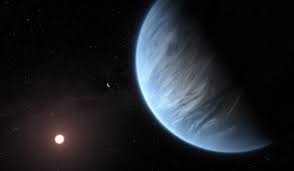
Breaking News
6.8 SPC vs. 300 Blackout: Powering Up the AR Platform
 Autism Study By McCullough Foundation Begins New Era of Free Scientific Inquiry
Autism Study By McCullough Foundation Begins New Era of Free Scientific Inquiry
 REVOLUTION DAY 8: Libertarians JOIN The Revolution
REVOLUTION DAY 8: Libertarians JOIN The Revolution
 US Government and Westinghouse $80bn Nuclear Reactor Deal
US Government and Westinghouse $80bn Nuclear Reactor Deal
Top Tech News
 Graphene Dream Becomes a Reality as Miracle Material Enters Production for Better Chips, Batteries
Graphene Dream Becomes a Reality as Miracle Material Enters Production for Better Chips, Batteries
 Virtual Fencing May Allow Thousands More Cattle to Be Ranched on Land Rather Than in Barns
Virtual Fencing May Allow Thousands More Cattle to Be Ranched on Land Rather Than in Barns
 Prominent Personalities Sign Letter Seeking Ban On 'Development Of Superintelligence'
Prominent Personalities Sign Letter Seeking Ban On 'Development Of Superintelligence'
 Why 'Mirror Life' Is Causing Some Genetic Scientists To Freak Out
Why 'Mirror Life' Is Causing Some Genetic Scientists To Freak Out
 Retina e-paper promises screens 'visually indistinguishable from reality'
Retina e-paper promises screens 'visually indistinguishable from reality'
 Scientists baffled as interstellar visitor appears to reverse thrust before vanishing behind the sun
Scientists baffled as interstellar visitor appears to reverse thrust before vanishing behind the sun
 Future of Satellite of Direct to Cellphone
Future of Satellite of Direct to Cellphone
 Amazon goes nuclear with new modular reactor plant
Amazon goes nuclear with new modular reactor plant
 China Is Making 800-Mile EV Batteries. Here's Why America Can't Have Them
China Is Making 800-Mile EV Batteries. Here's Why America Can't Have Them
Nearby Planetary System May Have The Right Conditions To Host Life

An artist's impression of L 98-59b, one of the planets in the L 98-59 system 35 light-years away. The system contains four confirmed rocky planets with a potential fifth, the furthest from the star, being unconfirmed. (ESO/M. Kornmesser)
Using the European Southern Observatory's Very Large Telescope in Chile, a team of astronomers studied the planets around the nearby star L 98-59, which has planets resembling those in the inner solar system.
Among their findings is a planet with half the mass of Venus, which is the lightest exoplanet ever measured with the radial velocity technique, according to a statement. They also discovered a planet that could be an ocean world as well as a possible planet in the habitable zone.
"The planet in the habitable zone may have an atmosphere that could protect and support life," María Rosa Zapatero Osorio, an astronomer at the Centre for Astrobiology in Madrid, Spain, and one of the authors of the study, said in the statement.
The new findings mark a milestone in scientists' quest to find life on other planets.
The findings include a technical breakthrough, since the team used the radial velocity method to discover the small mass of the innermost planet in the system.

 China Innovates: Transforming Sand into Paper
China Innovates: Transforming Sand into Paper

